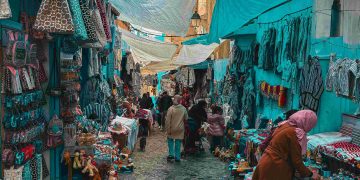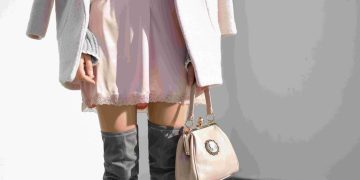Best Runway Trends Fashion Show
The runway is often considered the pinnacle of artistic expression in fashion—it’s where dreams intertwine with reality, redefining the boundaries of creativity, style, and culture. But have we ever stopped to ask ourselves: are runways truly reflecting the world we live in, or are they shaping the world we aspire to create? Diving into this year’s most captivating trends, we are not only witnessing shifts in aesthetics but transformations in values, technologies, and the way we perceive identity altogether.
Personal Perspective: My First Encounter With Runway Magic
A few years ago, I attended my first fashion show in New York City. The vibrant energy in the room, the models striding confidently down the illuminated runway, and the audience’s mixed reactions all painted a vivid tapestry of emotions. At one point, amidst the soaring highs of creativity, I felt a subtle undertone of unease. The collections, while stunning, seemed so detached from the everyday lives of the masses. It sparked a question: is fashion truly inclusive, or has it become a distant beacon of unattainable aspiration?
Breaking Down Barrier Trends
This year challenges that thought profoundly. One of the most striking runway directions is the embrace of “adaptive fashion”—a bold move toward inclusivity for people with disabilities. Designs aren’t just aesthetically pleasing; they’re functional. Magnetic fastenings for ease of wear and innovative materials suitable for sensory sensitivities are a testament to how fashion is finally waking up to the realities of everyday needs. This marks a departure from haute couture’s sometimes impractical designs and highlights how utility can coexist with beauty.
The Psychology Behind Trends
Why do runway trends resonate deeply with people? Neuropsychology gives us a clue. Dopamine dressing, a phenomenon revealed through studies, points to how bright colors and eclectic patterns stimulate positive emotions in the brain. This year’s runways were awash with vibrant palettes—bold reds, emerald greens, canary yellows—that symbolize optimism and resilience. Designers seem to echo a collective mood of recovery from global challenges, such as the COVID-19 pandemic, fostering hope through sartorial expression.
Technology Meets Fashion
Another standout aspect has been the seamless integration of technology. AI-designed collections, 3D-printed fabrics, and garments embedded with wearable tech are no longer novelties—they’re the new standard. Designers are working with engineers to create self-healing fabrics and temperature-regulating materials, hinting at how sustainability and innovation will soon drive more streamlined production and distribution processes.
Philosophy and Its Place on the Runway
Philosophers like Arthur Schopenhauer viewed aesthetics as a way to transcend reality—fashion takes this idea one step further by literally crafting new forms of reality. Many runways are reflecting existential themes today: what does identity mean in a digital age? Collections like digital suits, created for the avatar economy, push us to consider how bodies will be clothed in virtual spaces. Blurring lines between physical and digital, designers are asking philosophical questions while redefining the boundaries of creativity.
Practical Applications for the Everyday Consumer
What do these runway evolutions mean for you and me? First, they emphasize the necessity of sustainability. Adapting a minimalist wardrobe, choosing eco-friendly brands, and investing in timeless pieces are all actionable steps inspired by trends like the “slow fashion” movement. Next, experimenting with bold colors in workplaces or personal events can add an edge. Lastly, embracing designs that prioritize comfort alongside style—like adaptive pieces—can transform daily living into an effortlessly glamorous experience.
Cultural Disruption: Rethinking Tradition
Challenging conventions seems to be a recurring narrative in recent shows. Traditional gender norms, for instance, are being turned on their head. Non-binary designs and shared aesthetics for all identities are making waves, demonstrating that fashion isn’t just about adornment; it’s about advocacy.
One standout approach involved designers using indigenous textiles in modernized cuts—celebrating heritage without an air of appropriation. Such disruptions encourage us to question the linear perception of progress and instead embrace cyclical learning, where the past informs the future.
Learning From the Runway
Runways serve as an educational platform, not just a spectacle. They demonstrate the power of continuous learning—how adapting to change requires both curiosity and boldness. Designers borrow from psychology, technology, sociology, and history to create visions of what could be. Are we, as individuals, cultivating the same interdisciplinary mindset in our lives? It’s a call to action for self-improvement, to leverage different sectors of knowledge for better decision-making and creativity.









